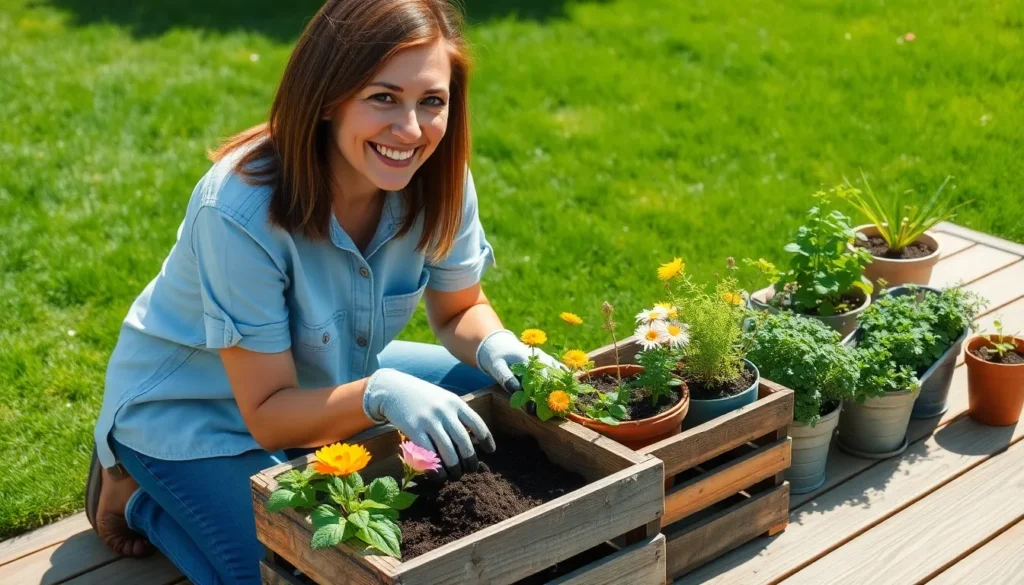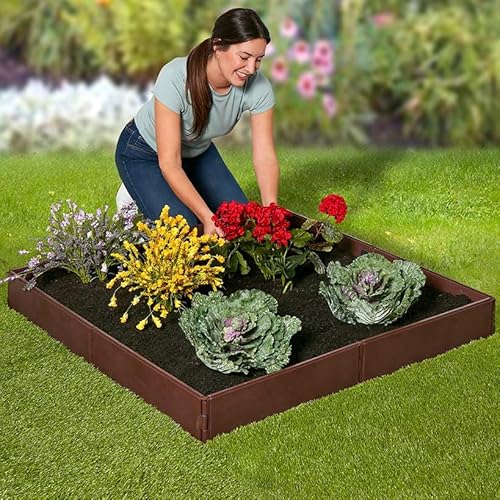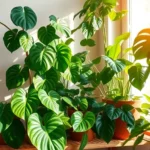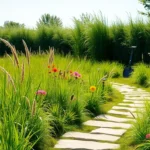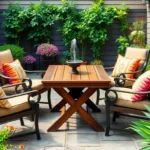We’ve all dreamed of having that perfect garden – lush greenery thriving under our care and beautiful blooms greeting us each morning. But let’s be honest: many of us think gardening requires a green thumb we simply don’t possess or hours we can’t spare from our busy lives.
The truth is you don’t need years of experience or endless free time to create a stunning outdoor space. With the right approach and some clever shortcuts we’ll share with you today simple gardening can transform even the most neglected yard into your personal oasis.
Whether you’re working with a tiny balcony or a sprawling backyard we’ve compiled the most effective low-maintenance strategies that deliver maximum impact. These proven techniques will have you enjoying a thriving garden without the overwhelm or constant upkeep that typically comes with traditional gardening methods.
Create a Container Garden for Small Spaces
Container gardening offers the perfect solution when you’re working with limited outdoor space. This approach lets you cultivate thriving plants without needing a traditional yard or garden bed.
Choose the Right Containers
Size matters when selecting containers for your plants. We recommend choosing pots that are at least 12 inches deep for most vegetables and herbs, while shallow-rooted plants like lettuce can thrive in containers as small as 6 inches deep.
Materials play a crucial role in container success. Plastic pots retain moisture longer and work well for beginners, while terracotta containers provide excellent drainage but require more frequent watering. Wooden boxes create a rustic look and offer good insulation for plant roots.
Budget-friendly options include repurposed items like old buckets, storage bins, or even worn-out boots. We’ve seen gardeners successfully use everything from colanders to wheelbarrows as unique planters that add character to their spaces.
Select Easy-to-Grow Plants
Herbs top our list of beginner-friendly container plants. Basil, mint, parsley, and chives require minimal care and provide fresh ingredients for your kitchen within weeks of planting.
Vegetables like cherry tomatoes, peppers, and lettuce adapt well to container life. These crops produce abundant harvests in small spaces and don’t require complex care routines that might overwhelm new gardeners.
Flowers such as marigolds, petunias, and nasturtiums add vibrant colors to your container garden. We particularly love nasturtiums because they’re edible and their peppery leaves make excellent salad additions.
Succulents offer the ultimate low-maintenance option for busy gardeners. Plants like echeveria, jade, and string of pearls store water in their leaves and can survive occasional neglect.
Arrange for Proper Drainage
Drainage holes prevent water from pooling at the bottom of containers. We drill several quarter-inch holes in the base of any container that doesn’t already have them, spacing them about 2 inches apart.
Layer placement improves water flow in deeper containers. Place a 1-2 inch layer of gravel, broken pottery, or small stones at the bottom before adding potting soil to create better drainage pathways.
Saucers protect surfaces but shouldn’t hold standing water. We empty saucers within 30 minutes after watering to prevent root rot and mosquito breeding in stagnant water.
Potting mix selection affects drainage significantly. Choose quality potting soil that contains perlite or vermiculite rather than garden soil, which compacts in containers and blocks proper water movement.
Start a Simple Herb Garden
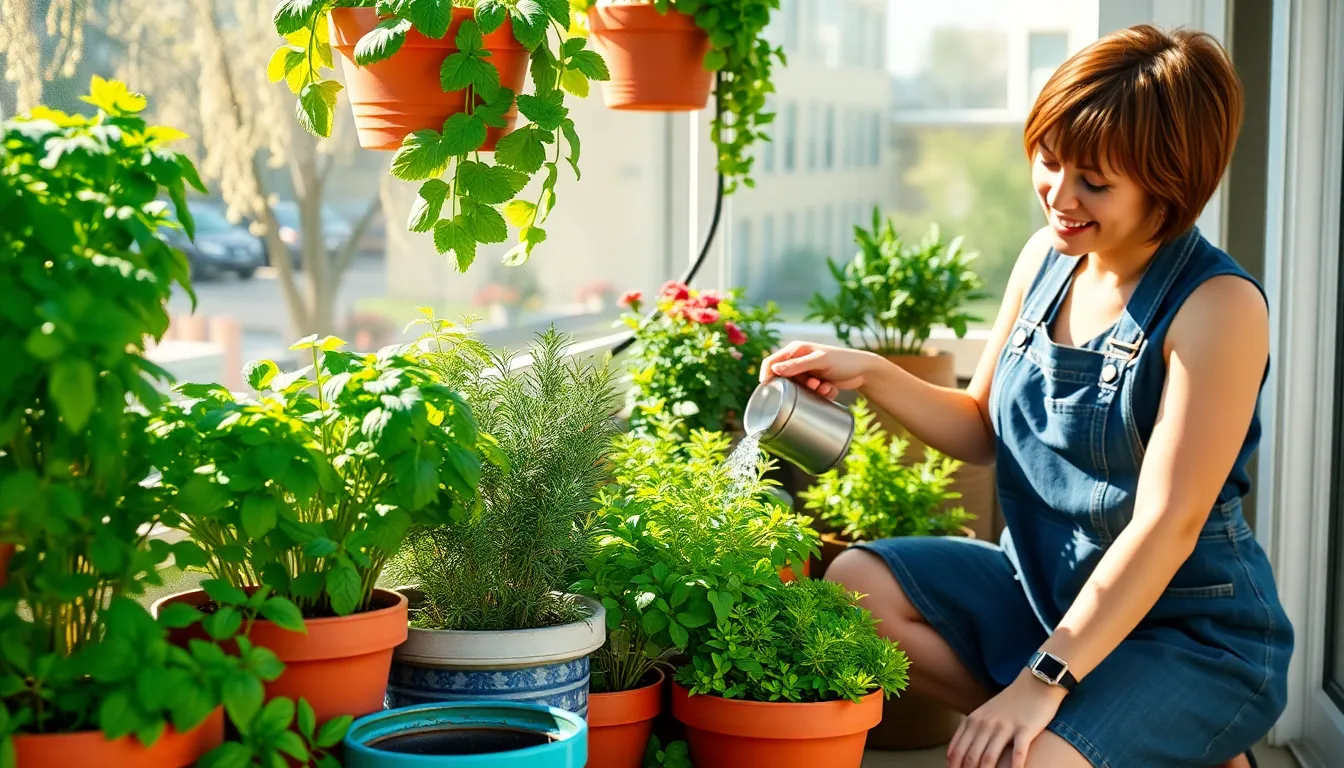
Building on the container gardening foundation we’ve established, herb gardening offers one of the most rewarding entry points into gardening. Fresh herbs provide immediate culinary benefits while requiring minimal maintenance compared to other plants.
Pick Low-Maintenance Herbs
Mint stands out as the most forgiving herb for beginners, thriving in almost any condition and spreading rapidly in containers. Basil grows quickly from seed and provides continuous harvests when you pinch off leaves regularly. Cilantro tolerates cooler weather and can be succession planted every few weeks for ongoing supply.
Rosemary acts as a perennial powerhouse, surviving harsh conditions while delivering intense flavor year round. Thyme creeps along container edges beautifully and requires watering only when soil feels dry to the touch. These five herbs form the perfect starter collection because they adapt to various growing conditions and forgive occasional neglect.
Find the Perfect Sunny Spot
Direct sunlight for 4-6 hours daily ensures healthy herb growth and maximum flavor concentration in leaves. South-facing locations typically provide the most consistent light throughout growing seasons. Morning sun works particularly well for herbs like cilantro that can bolt in intense afternoon heat.
Balconies and patios often offer ideal microclimates with protection from harsh winds while maintaining adequate light exposure. Window sills facing east or south can accommodate smaller herb containers when outdoor space isn’t available. We recommend observing your potential spots throughout one full day to identify areas receiving the most consistent sunlight.
Use Basic Planting Techniques
Well-draining soil prevents root rot, which kills more herbs than any other factor. Container depth of 6 inches accommodates most herb root systems adequately, making even small pots viable options. Potting mix specifically designed for containers outperforms garden soil in pots because it maintains proper drainage while retaining necessary moisture.
Watering frequency depends on container size and weather conditions, but most herbs prefer soil that dries slightly between waterings. Spacing herbs 4-6 inches apart in larger containers prevents overcrowding and improves air circulation. Harvesting regularly by pinching off outer leaves encourages bushier growth and prevents plants from flowering too early.
Design a No-Dig Raised Bed Garden
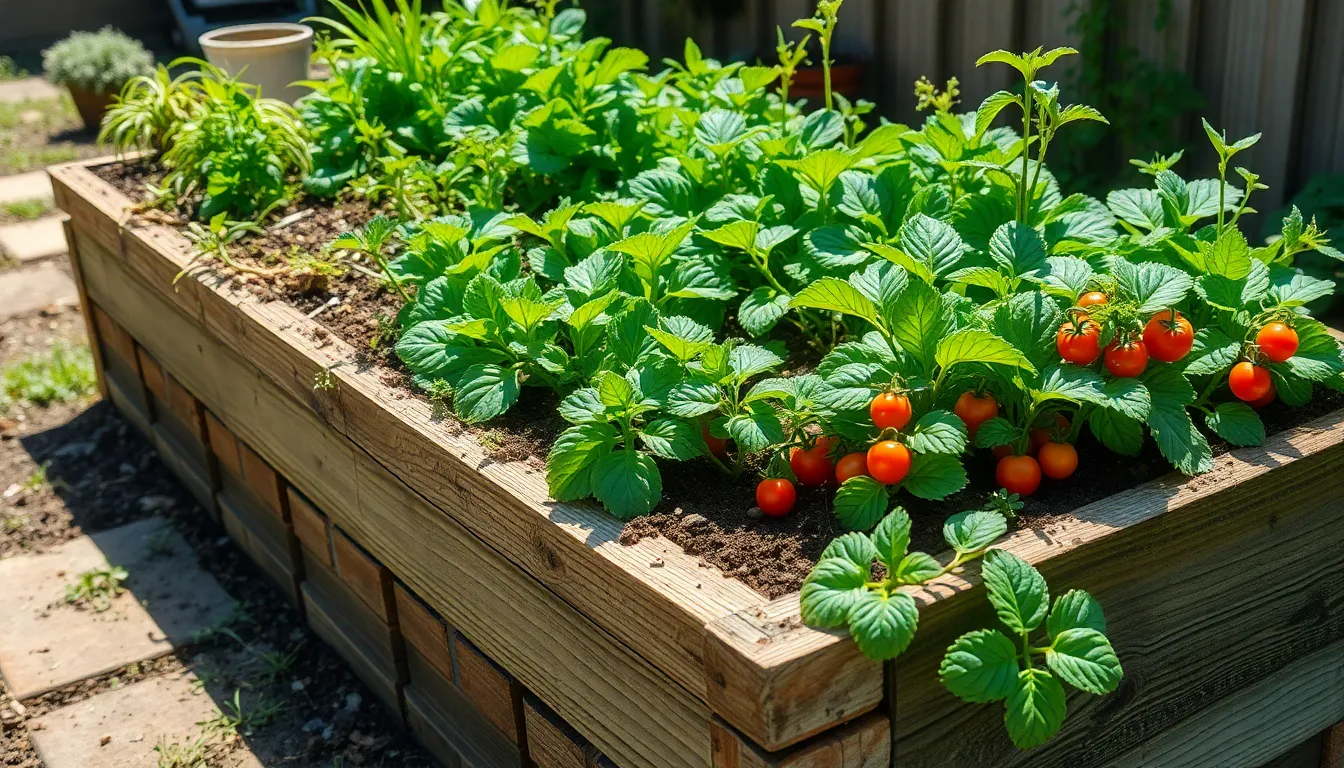
We can take our gardening success to the next level with a no-dig raised bed garden that eliminates tilling while preserving soil structure and reducing labor. This method works perfectly as our next step after mastering container gardening and herbs.
Build with Simple Materials
Starting with materials we already have around our property makes this project budget-friendly and accessible. Untreated lumber, pallets, bricks, cinder blocks, or recycled containers work exceptionally well for constructing the frame. We should avoid treated wood that may leach harmful chemicals into our soil.
Sizing our raised bed at 4 feet by 4 feet provides a manageable workspace for most beginners. Natural fabric lining extends the life of wooden frames by preventing direct soil contact. Repurposed items like old dresser drawers or large containers offer creative alternatives to traditional materials.
Fill with Quality Soil Mix
Layering our raised bed from bottom to top creates a nutrient-rich environment that suppresses weeds naturally. We start by placing cardboard or several sheets of newspaper directly on the ground to block unwanted vegetation.
Building our soil foundation requires alternating layers of carbon-rich “brown” materials and nitrogen-rich “green” materials:
| Brown Materials | Green Materials |
|---|---|
| Fallen leaves | Grass clippings |
| Straw | Coffee grounds |
| Shredded paper | Fresh manure |
Watering each layer as we build activates the decomposition process and helps materials settle properly. We finish with at least 6 inches of finished compost or quality garden soil mix on top, providing immediate nutrients for our plants.
Plant Beginner-Friendly Vegetables
Choosing vegetables that deliver quick results keeps us motivated throughout our gardening journey. Lettuce, radishes, spinach, green beans, and cherry tomatoes thrive in no-dig raised beds due to their easy care requirements.
Planting seeds or seedlings directly into our compost layer gives them immediate access to rich nutrients. Fast-growing vegetables like radishes can be harvested in just 30 days, while leafy greens provide continuous harvests throughout the growing season.
Maintaining our no-dig garden requires only light watering and occasional compost top-ups. This approach supports soil health while quickly yielding a productive garden that complements our existing container herbs perfectly.
Establish a Low-Water Succulent Garden
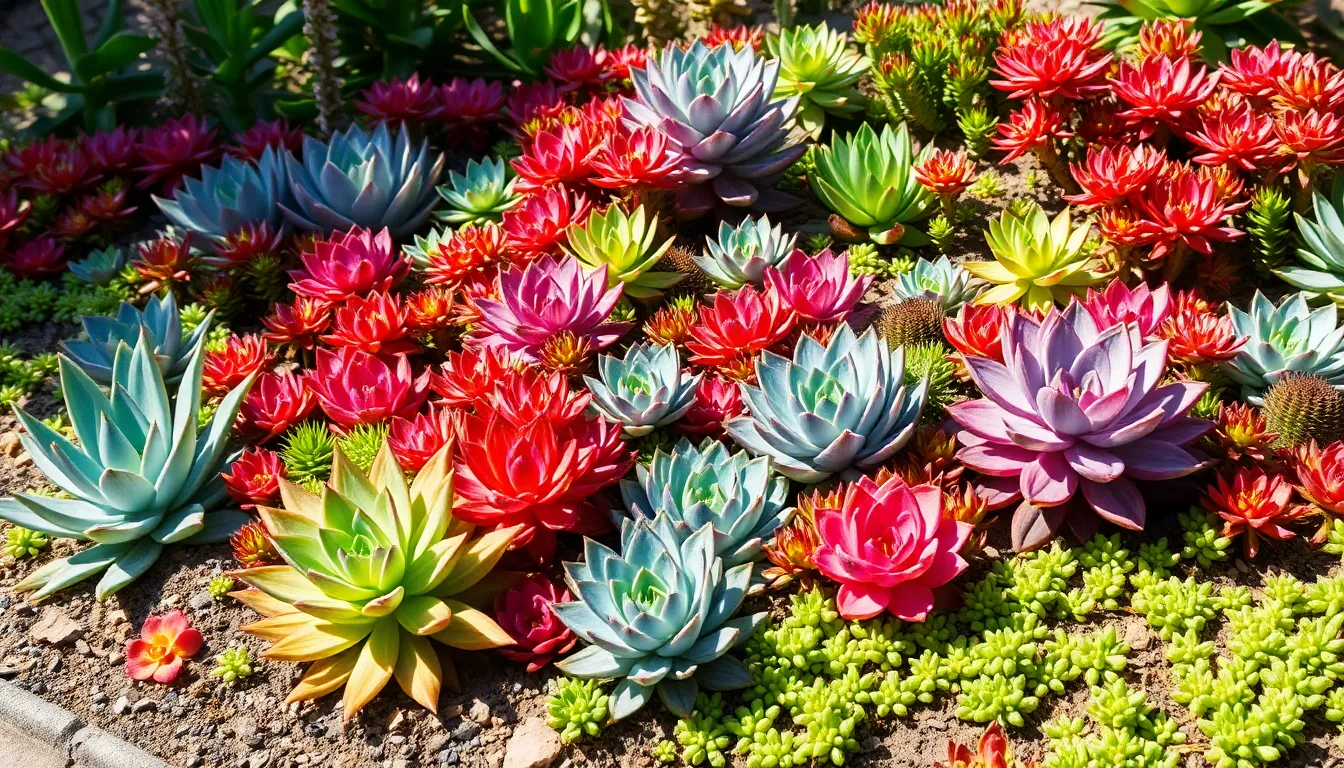
Building on our no-dig raised bed foundation, we can create stunning drought-resistant gardens that require minimal watering while maximizing visual appeal. Succulents offer the perfect solution for busy gardeners who want beauty without constant maintenance.
Select Drought-Tolerant Varieties
Choose naturally water-wise succulents that thrive in dry conditions and require minimal care. Aloe vera, echeverias, and sedums represent excellent starting points for beginners since they’re naturally drought tolerant and forgiving of occasional neglect.
Start with proven performers like these hardy varieties that adapt well to various growing conditions. Aloe vera provides both ornamental value and practical uses for minor burns or skin irritations. Echeverias offer stunning rosette formations in colors ranging from blue-green to deep purple.
Add sedums for ground coverage and textural interest throughout your succulent garden. These mat-forming varieties spread naturally to fill spaces while requiring water only once weekly during summer months.
Create Proper Soil Conditions
Mix equal parts potting soil and pumice to create the ideal drainage conditions that prevent root rot in succulent gardens. This combination ensures water flows through quickly while still providing necessary nutrients for healthy growth.
Improve existing garden soil by incorporating drainage materials like pumice or coarse sand before planting. Poor drainage kills more succulents than drought conditions, making proper soil preparation essential for long-term success.
Test your soil mixture by watering thoroughly and observing how quickly water drains away. The soil should feel like a wrung-out sponge when properly moistened, never soggy or waterlogged.
Arrange for Maximum Visual Impact
Create flowing designs using mat-forming succulents that can mimic the appearance of water by filling spaces and reflecting light. These arrangements add movement and visual interest to your drought-resistant garden.
Design a waterless lily pond using flat succulents like dinner plate aeoniums as focal points surrounded by smaller varieties. This creative approach demonstrates how succulents can replace traditional water features while requiring zero irrigation.
Layer different heights and textures to create depth and visual appeal throughout your succulent garden. Combine tall architectural varieties with spreading ground covers and compact rosette forms for maximum impact with minimal water requirements.
Plant a Quick-Growing Flower Border
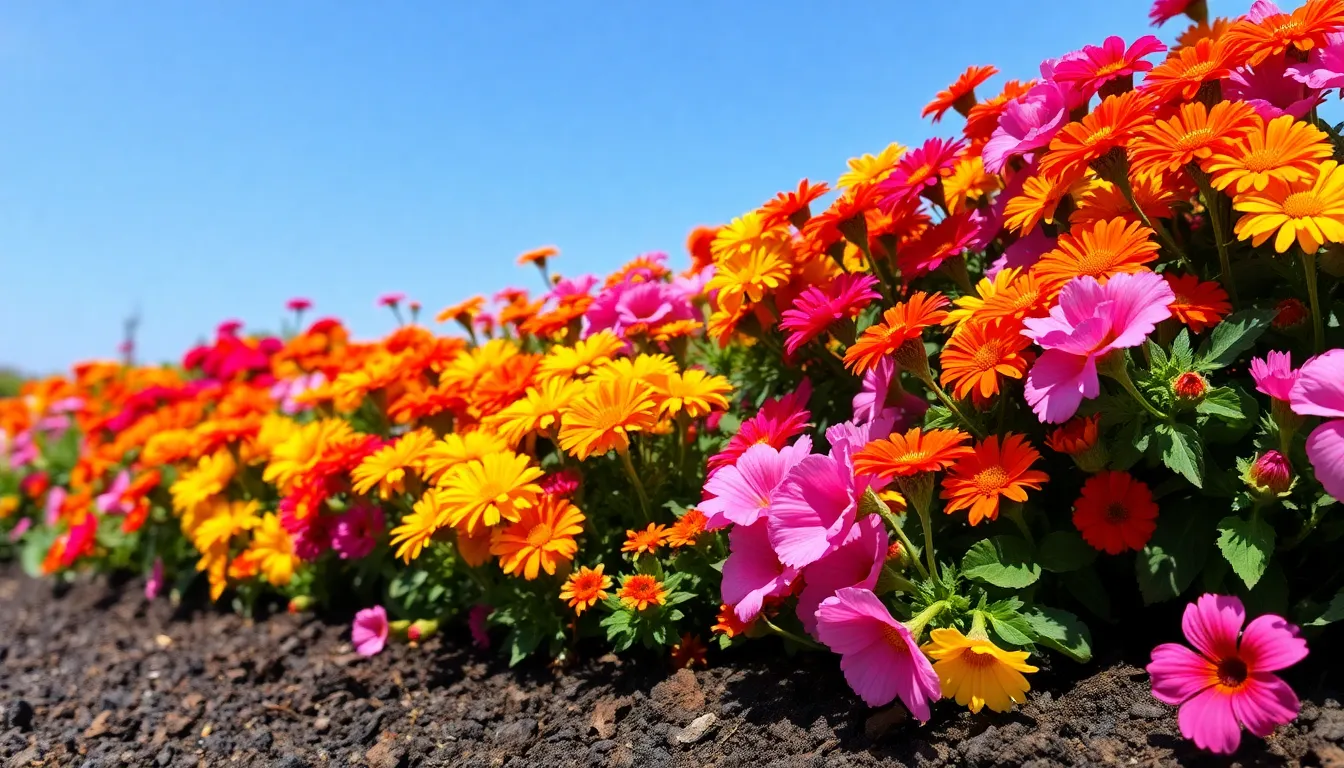
Building on our low-maintenance gardening approach, we’ll explore how to create a vibrant flower border that delivers instant results. This strategy transforms bare garden edges into colorful displays within weeks rather than months.
Choose Fast-Blooming Annuals
Marigolds rank among the fastest bloomers, producing their first flowers just 8 weeks from seed. These hardy annuals thrive in full sun and require minimal water once established.
Zinnias follow closely behind, blooming within 10-12 weeks and continuing until the first frost. We recommend varieties like ‘State Fair Mix’ and ‘Profusion Series’ for their disease resistance and extended bloom period.
Petunias provide exceptional value with their trumpet-shaped flowers that cascade beautifully over border edges. Wave petunias and grandiflora types offer the most dramatic color impact throughout the growing season.
Nasturtiums deserve special mention for their edible flowers and 6-week bloom time from direct sowing. Their peppery leaves add culinary value while their bright orange and yellow blooms attract beneficial pollinators.
Prepare the Planting Area
Remove all weeds and debris from your designated border area using a garden hoe or hand tools. This initial clearing prevents competition for nutrients and water during the critical establishment period.
Enrich the soil with 2-3 inches of compost or well-aged manure to improve drainage and provide essential nutrients. Well-drained soil prevents root rot and promotes faster root development in young plants.
Test your soil drainage by digging a 12-inch hole and filling it with water. Proper drainage occurs when water disappears within 24 hours, ensuring your annuals won’t suffer from waterlogged conditions.
Create planting rows 18-24 inches apart to allow adequate air circulation between mature plants. This spacing reduces disease pressure and gives each plant room to reach its full potential.
Design for Continuous Color
Mix early and late-blooming varieties to maintain color from spring through fall frost. Plant cool-season annuals like pansies and snapdragons alongside heat-loving marigolds and zinnias for extended seasonal interest.
Stagger your plantings every 2-3 weeks during the growing season to ensure fresh blooms replace fading ones. This succession planting technique keeps your border looking vibrant throughout the entire growing period.
Arrange plants by height with taller varieties like zinnias (24-36 inches) in the back and shorter marigolds (6-12 inches) in front. This layered approach maximizes visual impact and ensures all plants receive adequate sunlight.
Incorporate white flowers like alyssum between colorful varieties to create visual breaks and make adjacent colors appear more vibrant. White serves as a neutral backdrop that enhances the overall design cohesion.
Build a Vertical Garden Wall
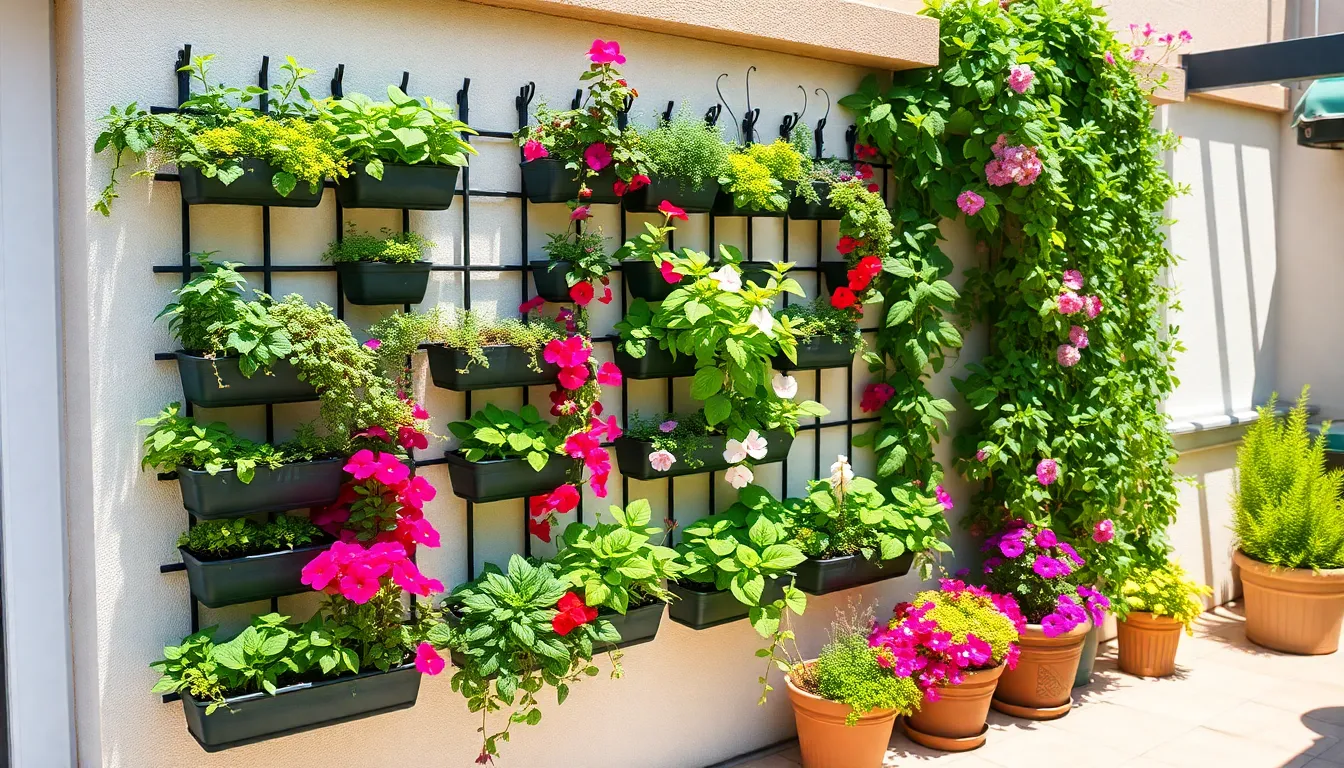
We can maximize our growing space by building upward when ground space becomes limited. Wall-mounted planters and trellis systems transform any vertical surface into a productive garden area without requiring extensive floor space.
Use Hanging Planters or Pockets
Hanging planters offer us flexibility to add greenery at eye level while keeping floor areas clear for other uses. We’ll find these containers work exceptionally well for herbs like oregano and parsley, flowering plants such as petunias and begonias, and even small vegetables like cherry tomatoes.
Wall pockets provide multiple planting spots in a compact vertical arrangement that’s perfect for apartments or small patios. These fabric or plastic systems typically hold 6-12 plants in individual compartments, allowing us to create diverse combinations of plants with different water and light needs.
Mounting these systems becomes straightforward when we use wall brackets designed for outdoor use. We should ensure our chosen wall receives adequate sunlight for our selected plants, typically 4-6 hours of direct sun for most flowering varieties and herbs.
Select Trailing and Climbing Plants
Climbing plants like clematis naturally grow upward using nearby structures for support, making them ideal choices for vertical gardens. We can train ivy varieties to cover entire wall sections within a single growing season, creating lush green backgrounds that require minimal maintenance once established.
Trailing plants such as nasturtiums cascade downward from elevated planters, creating beautiful waterfall effects that soften harsh architectural lines. Wisteria produces spectacular spring blooms but requires sturdy support systems due to its eventual weight and vigorous growth habits.
Sweet peas climb quickly using tendrils and produce fragrant flowers throughout summer months when we provide them with string or wire supports. We’ll achieve best results by selecting varieties suited to our climate zone and providing consistent moisture during establishment periods.
Install Simple Support Systems
Trellises provide essential framework for plants that need vertical guidance, particularly vegetables like peas and beans that naturally seek upward growth patterns. We can construct basic trellises using bamboo stakes connected with garden twine, creating cost-effective support structures that blend naturally with plant materials.
Stakes work perfectly for tomato plants and other heavy producers that might topple under fruit weight without proper support. We should install these supports at planting time to avoid disturbing root systems later, driving stakes 12-18 inches deep for adequate stability.
Wire mesh panels attached to wall surfaces create versatile climbing opportunities for various plant types while maintaining clean appearance. These systems allow us to adjust plant placement as growth occurs and provide long-term durability that withstands weather conditions and plant weight.
Create a Wildlife-Friendly Native Garden
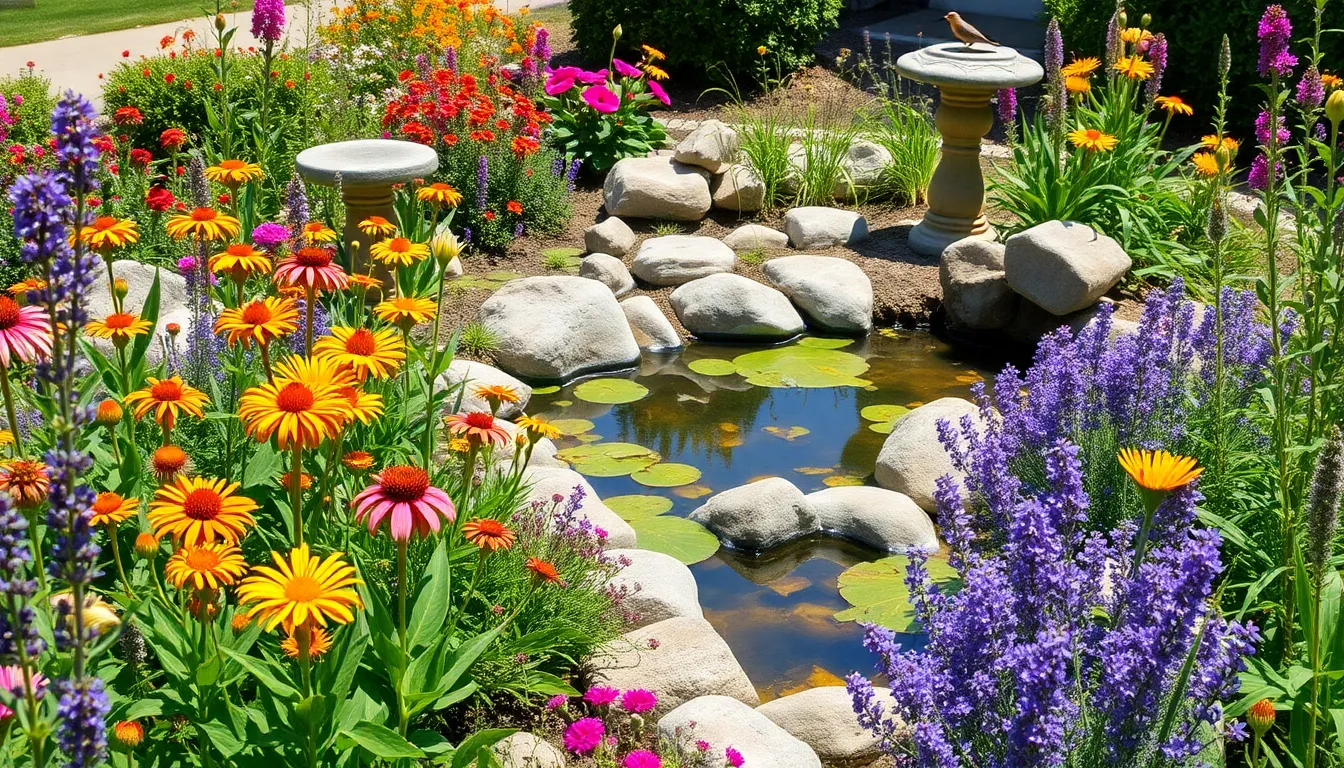
Transforming our outdoor space into a wildlife sanctuary doesn’t require extensive landscaping experience. Native gardens support local ecosystems while reducing maintenance demands through natural plant adaptations.
Research Local Native Plants
Identify native species that thrive naturally in our region to create the foundation of our wildlife garden. Mountain mints, Joe Pye weeds, and milkweeds provide essential habitat for pollinators, birds, and insects while requiring minimal care once established.
Ecological benefits multiply when we choose plants that evolved alongside local wildlife populations. Native species support specialized relationships between plants and animals that non-native varieties simply can’t replicate, creating a self-sustaining network in our backyard.
Research local nurseries and botanical societies to discover which plants perform best in our exact climate and soil conditions. Most regions have dedicated native plant societies that offer plant sales, educational resources, and expert guidance for beginning native gardeners.
Design for Year-Round Interest
Layered planting mimics natural forest ecosystems by combining tall canopy trees with understory shrubs, herbaceous plants, and groundcovers. This vertical diversity creates multiple habitat zones that support different wildlife species throughout the seasons.
Seasonal interest ensures our garden provides continuous beauty and wildlife support by incorporating plants that bloom, fruit, or display attractive foliage at different times. Early spring bloomers feed emerging pollinators, while late-season seed producers sustain birds through winter months.
Structure plants like native grasses and shrubs provide winter shelter for wildlife while adding visual interest to dormant season gardens. Leaving seed heads and plant stems through winter creates natural food sources and nesting materials for beneficial insects and birds.
Provide Natural Habitat Features
Water features attract diverse wildlife by providing essential drinking and bathing opportunities through bird baths or small ponds with gentle slopes. Shallow water areas accommodate different species’ needs, from tiny insects to larger birds seeking safe access points.
Shelter options multiply when we create diverse hiding places using log piles, rock piles, and native shrubs that offer protection from predators and weather. These features support various wildlife species by providing nesting sites, overwintering locations, and hunting grounds.
Dead wood attracts beneficial insects and provides nesting cavities for native bees when we retain log piles and stumps in our garden design. Decomposing wood creates habitat for countless organisms that form the base of our garden’s food web, supporting larger wildlife populations naturally.
Develop a Simple Maintenance Schedule
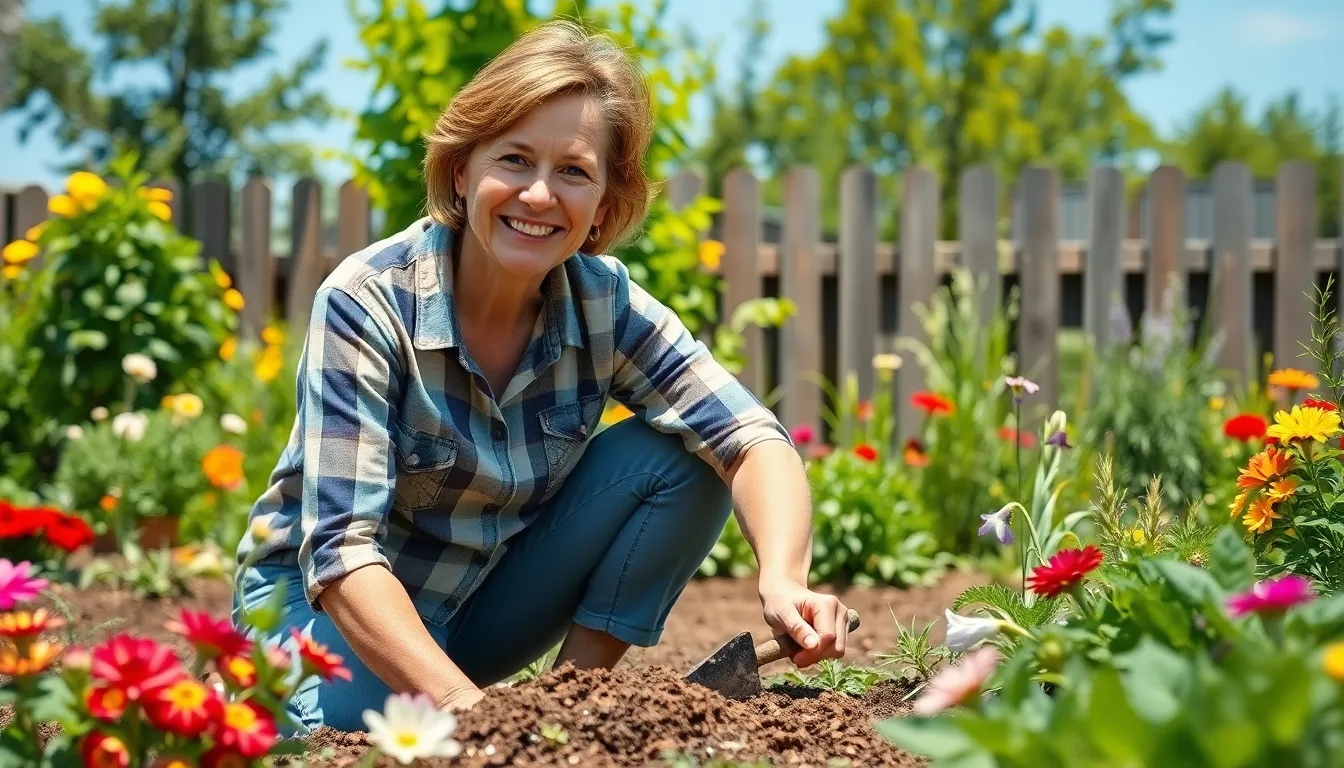
Creating a maintenance routine doesn’t require complicated systems or extensive time commitments. We’ll establish simple daily and weekly practices that keep our gardens thriving with minimal effort.
Set Up Basic Watering Systems
Daily watering becomes essential for new gardens until plants establish strong root systems. We recommend checking soil moisture by feeling the top inch of soil before adding water to prevent over-saturation. Established plants thrive with deeper, less frequent watering sessions every 2-3 days during summer months.
Drip irrigation systems offer efficient, automated answers for busy gardeners. Soaker hoses provide another excellent option that delivers water directly to plant roots while reducing water waste. These systems eliminate guesswork and ensure consistent moisture levels throughout our garden beds.
Morning watering sessions work best for most plants and growing conditions. Water evaporates more slowly during cooler morning hours, giving plants time to absorb moisture before afternoon heat arrives. Evening watering can promote fungal diseases in humid climates, so we stick to early morning schedules when possible.
Plan Seasonal Care Tasks
Spring preparation begins after the last frost date in our region. We plant herbs and vegetables once soil temperatures warm consistently above 50°F. Mulching beds during this season helps retain moisture and suppress weed growth throughout the growing season.
Summer maintenance focuses on harvesting and continued mulching around established plants. We harvest vegetables and herbs as they ripen to encourage continued production. Watering frequency increases during hot summer months, but we maintain our deep watering approach rather than frequent shallow sessions.
Fall cleanup removes spent plants and prepares beds for winter dormancy. Adding compost to garden beds during autumn provides nutrients for next season’s growth. We protect sensitive plants with mulch or row covers before the first hard freeze arrives.
Winter tasks involve minimal garden intervention while maintaining bed structure. Protecting tender plants with appropriate coverings ensures survival through cold months. Planning next season’s garden layout during winter months helps us stay organized and prepared for spring planting.
Track Plant Growth and Health
Garden journals provide simple documentation systems for tracking planting dates and growth milestones. We note which varieties perform best in our exact conditions and climate zone. Digital apps offer convenient alternatives for gardeners who prefer electronic record keeping over traditional paper methods.
Weekly plant inspections help identify pest issues and disease problems before they spread. We examine leaves for discoloration, holes, or unusual growth patterns that indicate stress or health concerns. Early detection allows for prompt treatment and prevents minor issues from becoming major garden disasters.
Growth tracking reveals which plants thrive and which struggle in our garden conditions. We adjust care routines, watering schedules, or plant placement based on observed performance patterns. This information guides future plant selections and helps us create more successful garden designs over time.
Success measurements include harvest quantities, bloom duration, and overall plant vigor. We record which fertilizers or soil amendments produce the best results for different plant types. These notes become invaluable references for improving our gardening techniques and achieving better results each growing season.
Conclusion
These simple garden ideas prove that you don’t need years of experience or endless hours to create something beautiful. Whether you’re working with containers on a balcony or transforming an entire backyard into a wildlife haven we’ve shown you practical approaches that deliver real results.
The key to gardening success lies in starting small and choosing strategies that match your lifestyle. From low-maintenance succulents to productive herb gardens each method we’ve discussed builds your confidence while keeping your time investment manageable.
Remember that every garden is a learning experience and there’s no such thing as perfection. With these easy techniques you’re well-equipped to create an outdoor space that brings you joy year after year. Your garden journey starts with that first small step – and we’re confident you’ll love where it takes you.
Frequently Asked Questions
Do I need gardening experience to start a low-maintenance garden?
No, you don’t need extensive gardening experience or a “green thumb” to create a beautiful garden. Low-maintenance gardening strategies can help beginners transform any outdoor space, from small balconies to large backyards, into a personal oasis with minimal effort and time commitment.
What is container gardening and why is it good for beginners?
Container gardening is ideal for those with limited outdoor space, using pots and repurposed items as planters. Choose containers at least 12 inches deep for most vegetables and herbs, ensure proper drainage, and select easy-to-grow plants like herbs, vegetables, and flowers that require minimal care.
Which herbs are best for beginner gardeners?
Low-maintenance herbs perfect for beginners include mint, basil, cilantro, rosemary, and thyme. These herbs are forgiving, require minimal care, and thrive in sunny locations. They’re an excellent entry point for new gardeners and provide fresh ingredients for cooking.
What is a no-dig raised bed garden?
A no-dig raised bed garden eliminates tilling while preserving soil structure. Build simple raised beds using basic materials and fill with nutrient-rich soil mix. Plant beginner-friendly vegetables like lettuce, radishes, spinach, green beans, and cherry tomatoes for easy success.
How do I create a low-water succulent garden?
Select drought-tolerant succulents like aloe vera, echeverias, and sedums that forgive occasional neglect. Mix potting soil with pumice for proper drainage and create visually appealing arrangements by layering different heights and textures. These gardens require minimal watering while maximizing visual impact.
What are the best flowers for quick results?
Fast-blooming annuals like marigolds, zinnias, petunias, and nasturtiums deliver instant color and continuous blooms. Focus on proper soil preparation, appropriate spacing, and strategic design for a vibrant flower border that provides immediate visual impact with minimal maintenance.
How can I maximize growing space in small areas?
Create vertical gardens using wall-mounted planters, trellis systems, and hanging planters. Select trailing and climbing plants like clematis and sweet peas, and install simple support systems like trellises and stakes to guide upward growth and maximize your available space.
What is a wildlife-friendly native garden?
A wildlife-friendly native garden uses local native plants like mountain mints and milkweeds that support local ecosystems and require minimal care. Research plants native to your region, create diverse habitat zones, and incorporate natural features like water sources and shelter options.
How do I maintain my low-maintenance garden?
Develop a simple schedule with daily and weekly tasks. Set up basic watering systems like drip irrigation or soaker hoses for consistent moisture. Follow seasonal care routines including spring preparation, summer maintenance, fall cleanup, and winter protection for optimal plant health.
Should I track my garden’s progress?
Yes, tracking plant growth and health through garden journals or digital apps helps identify pest issues and measure success. Monitor harvest quantities and plant vigor to adjust care routines and improve your gardening techniques over time for better results.

